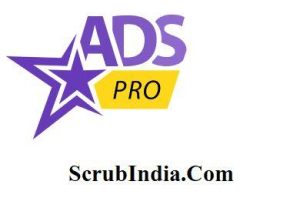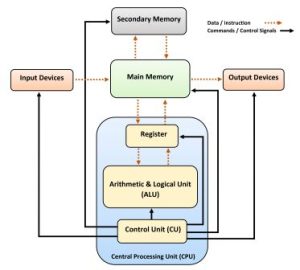
Google Ads Revolution: Stay Ahead in the Digital Marketing Game with 6 Strategies
Google Ads Revolution: Stay Ahead in the Digital Marketing Game with 6 Strategies In this post, we will delve into the world of Google Ads, exploring its features, benefits, and strategies for maximizing its potential. In today’s digital age, where the internet is the epicenter of marketing and business growth, Google Ads has emerged as a formidable tool for businesses looking to enhance their online visibility. With its vast reach and targeting capabilities, Google Ads has revolutionized the way companies connect with their target audience and drive conversions. What Are Google Ads? Google Ads, formerly known as Google AdWords, is an online advertising platform developed by Google. It allows businesses to create and display advertisements within Google’s search engine results pages (SERPs) and across its vast network of partner websites. These advertisements can take various forms, including text, display, video, and app ads, all designed to reach specific audiences and achieve specific marketing objectives. The Power of Google Ads Reach a Global Audience One of the primary advantages of using Google Ads is the platform’s immense reach. With billions of daily searches conducted on Google, your advertisements can potentially reach a global audience. Whether you’re a local business looking to attract nearby customers or an international corporation seeking to expand your customer base, Google Ads offers the flexibility to target specific geographic regions or the entire world. Targeted Advertising Google Ads excels in its ability to target advertisements to highly specific demographics and user behaviors. Advertisers can refine their campaigns based on factors such as location, age, gender, interests, and even the devices users are using to search. This precision targeting ensures that your ads are shown to individuals who are most likely to be interested in your products or services, thereby increasing the chances of conversion. Cost Control Google Ads provides advertisers with full control over their budgets. You can set daily or monthly spending limits, ensuring that you never exceed your advertising budget. Additionally, Google employs a pay-per-click (PPC) model, meaning you only pay when someone clicks on your ad. This cost-effective approach allows businesses of all sizes to participate in online advertising without breaking the bank. Measurable Results One of the key benefits of Google Ads is its robust analytics and tracking capabilities. Advertisers can access detailed performance data, including click-through rates (CTR), conversion rates, and return on investment (ROI). This data allows you to evaluate the effectiveness of your campaigns and make data-driven decisions to optimize your advertising efforts continually. How Google Ads Works Google Ads operates on a competitive bidding system. When you create an ad campaign, you select specific keywords or phrases related to your products or services. When a user enters a search query containing those keywords, Google’s algorithm determines which ads to display based on several factors, including the bid amount and ad relevance. Keyword Research Effective keyword research is a crucial aspect of Google Ads success. It involves identifying the keywords and phrases that potential customers are likely to use when searching for products or services similar to yours. Google’s Keyword Planner tool is a valuable resource for discovering relevant keywords and estimating their search volume. Ad Campaign Creation Once you’ve identified your target keywords, you can create ad campaigns within the Google Ads platform. Each campaign can include multiple ad groups, each focused on a specific set of keywords. Advertisers can choose from various ad formats, including: Text Ads: These are the standard text-based advertisements that appear in Google’s search results. They consist of a headline, description, and a display URL. Display Ads: Display ads appear on websites within Google’s display network. They can include images, text, and even video. Video Ads: Video ads are displayed on YouTube and other video-sharing platforms. They are an excellent choice for businesses with engaging video content. App Ads: If you’re promoting a mobile app, Google Ads allows you to create app install ads to drive downloads. Bidding and Budgeting In the Google Ads auction system, advertisers bid on keywords relevant to their business. The bid amount represents the maximum amount you are willing to pay for a click on your ad. Higher bids increase the likelihood of your ad being displayed, but they also impact your overall advertising costs. Advertisers must find a balance between bidding competitively and maintaining a profitable ROI. Ad Rank and Ad Position Google uses an algorithm to determine the ad rank for each advertisement in the auction. Ad rank is influenced by several factors, including bid amount, ad quality, and expected click-through rate. Ads with higher ad ranks are more likely to appear in the top positions on the search results page. Strategies for Success with Google Ads To maximize the effectiveness of your Google Ads campaigns, consider the following strategies: 1. Conduct Thorough Keyword Research Invest time in researching relevant keywords that align with your business goals. Use keyword research tools to identify high-converting keywords with moderate competition. Additionally, consider long-tail keywords, which are more specific and often have lower CPC (cost-per-click). 2. Create Compelling Ad Copy Your ad copy plays a pivotal role in attracting users and driving conversions. Craft concise and persuasive headlines and descriptions that clearly communicate the value of your products or services. Include relevant keywords in your ad copy to improve ad relevance and quality score. 3. Optimize Landing Pages When users click on your ads, they should be directed to a well-optimized landing page that provides the information they need to make a decision. Ensure that your landing pages are mobile-friendly, load quickly, and feature a clear call-to-action (CTA). 4. Test and Refine A/B testing is a critical component of Google Ads success. Experiment with different ad variations to determine which ones perform best. Test different headlines, descriptions, and even ad formats to find the winning combination. 5. Monitor and Adjust Regularly monitor the performance of your ad campaigns using Google Ads’ reporting and analytics tools. Analyze data on CTR, conversion rates, and ROI to identify areas for improvement.
Google Ads Revolution: Stay Ahead in the Digital Marketing Game with 6 Strategies Read More »









